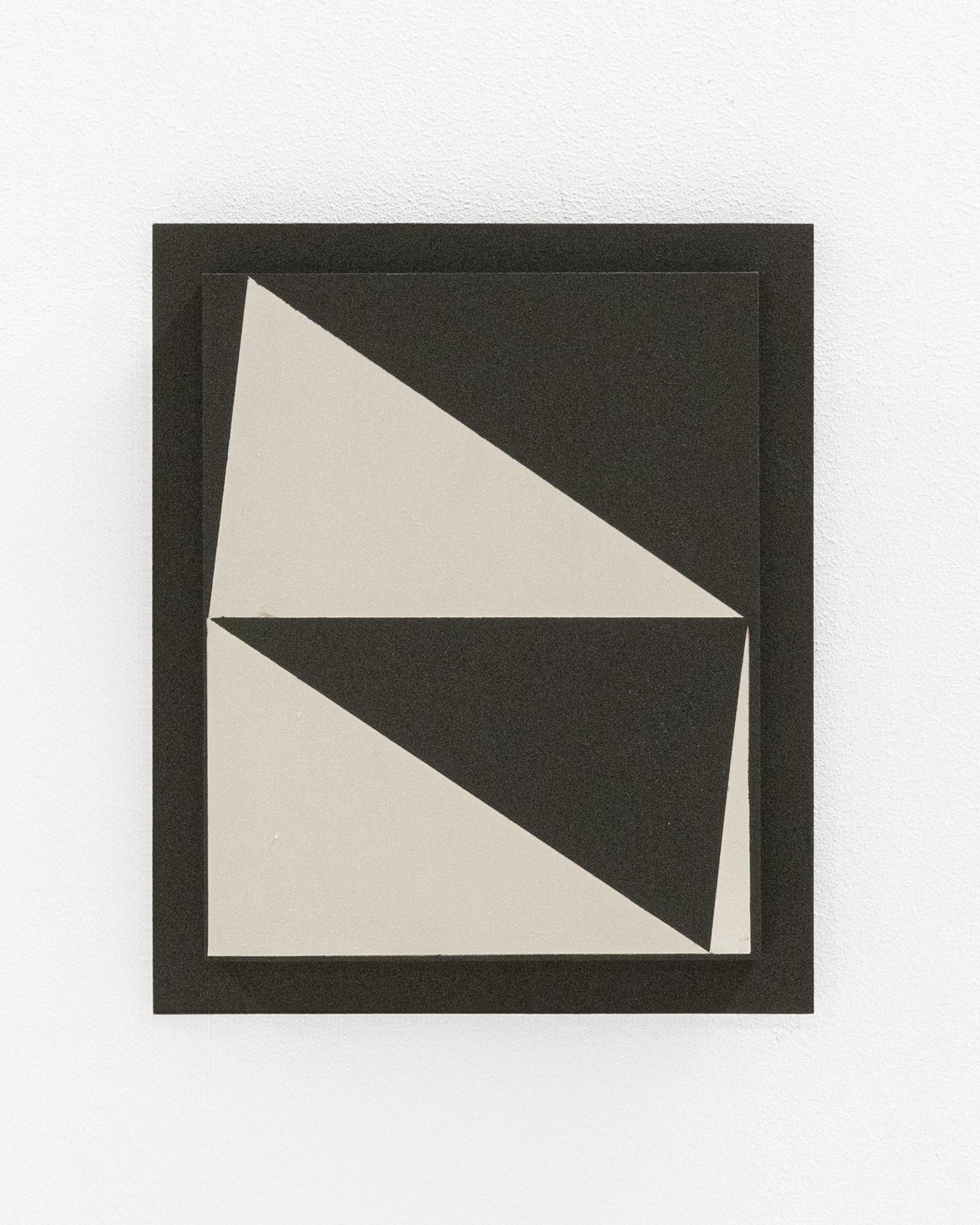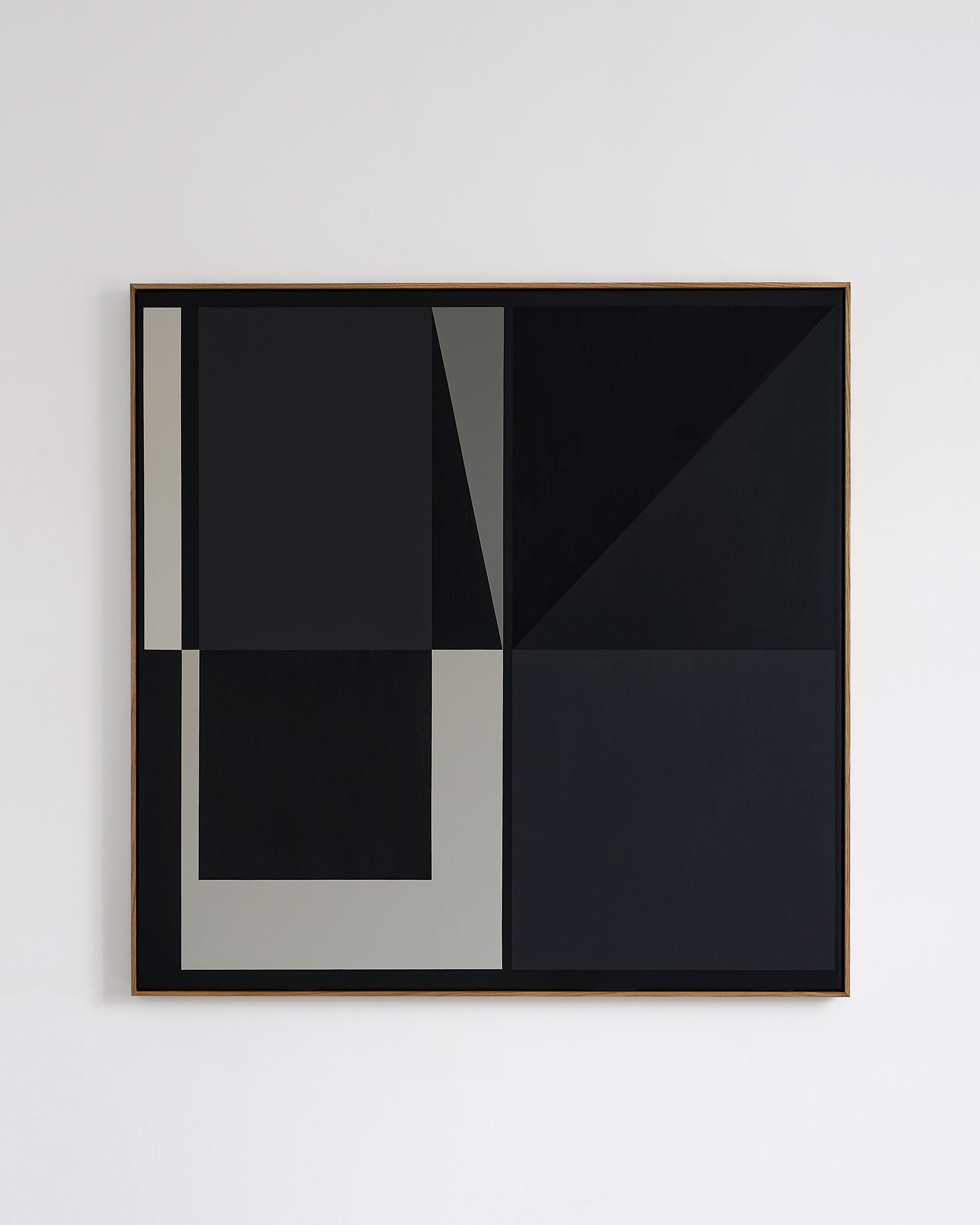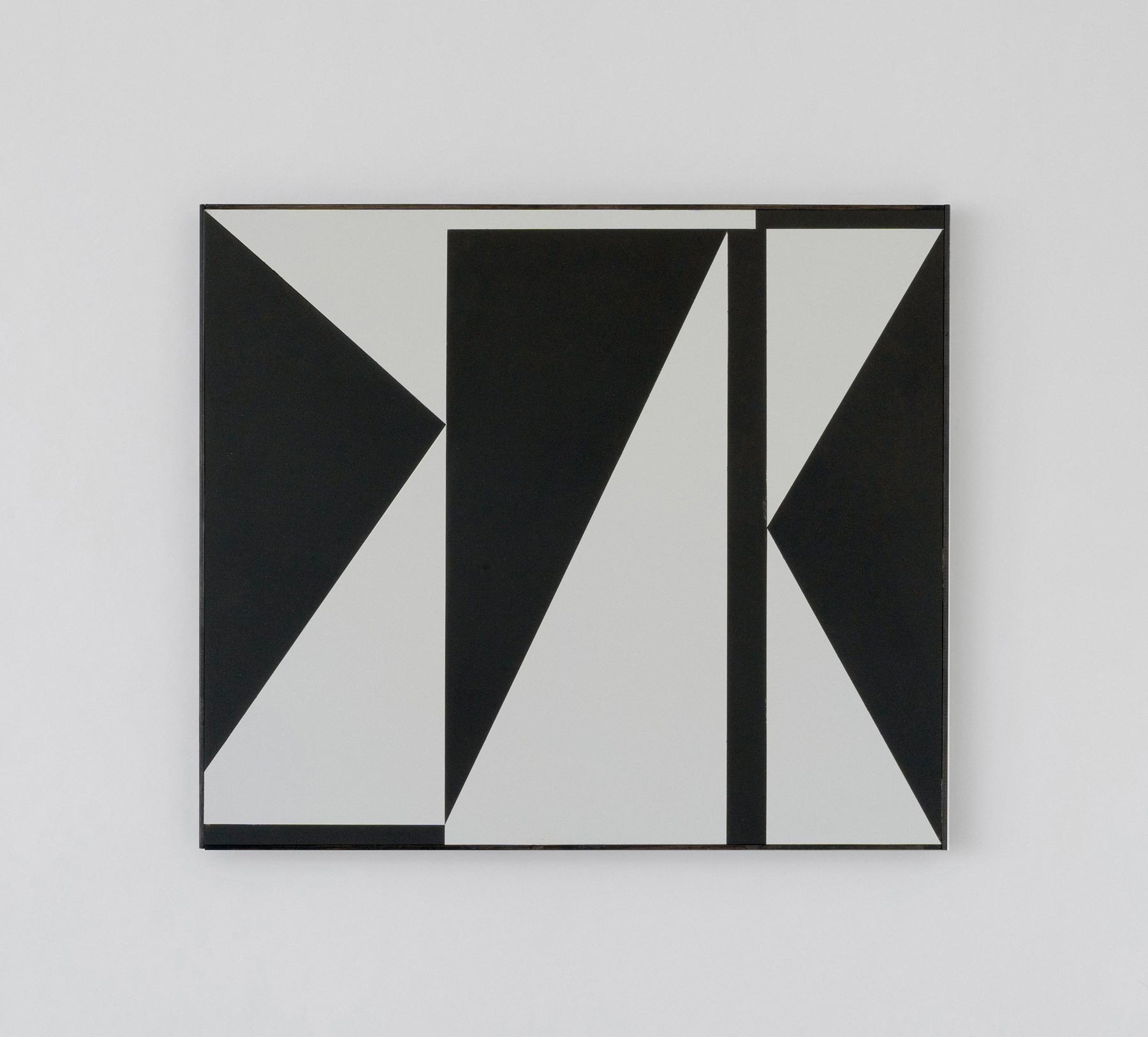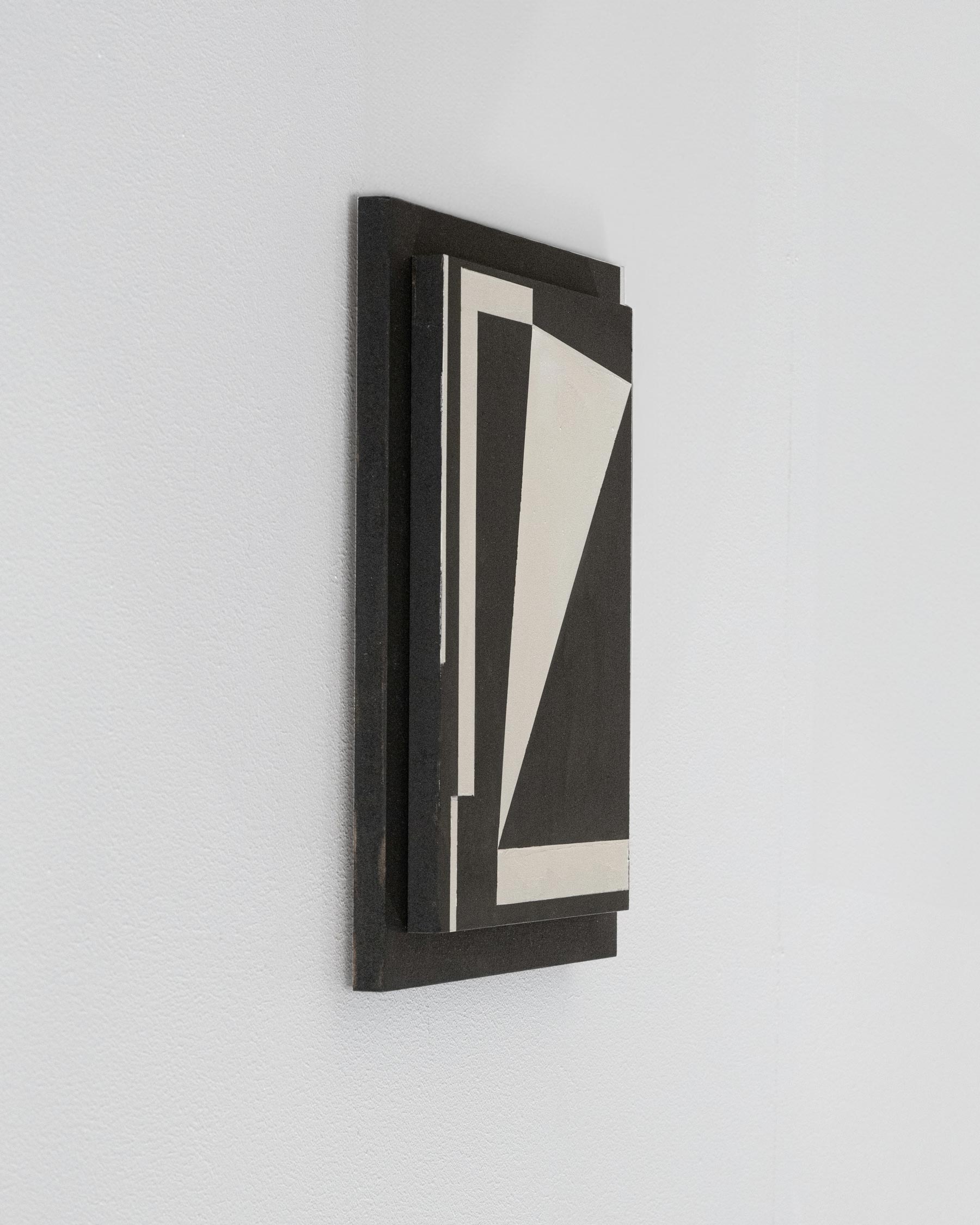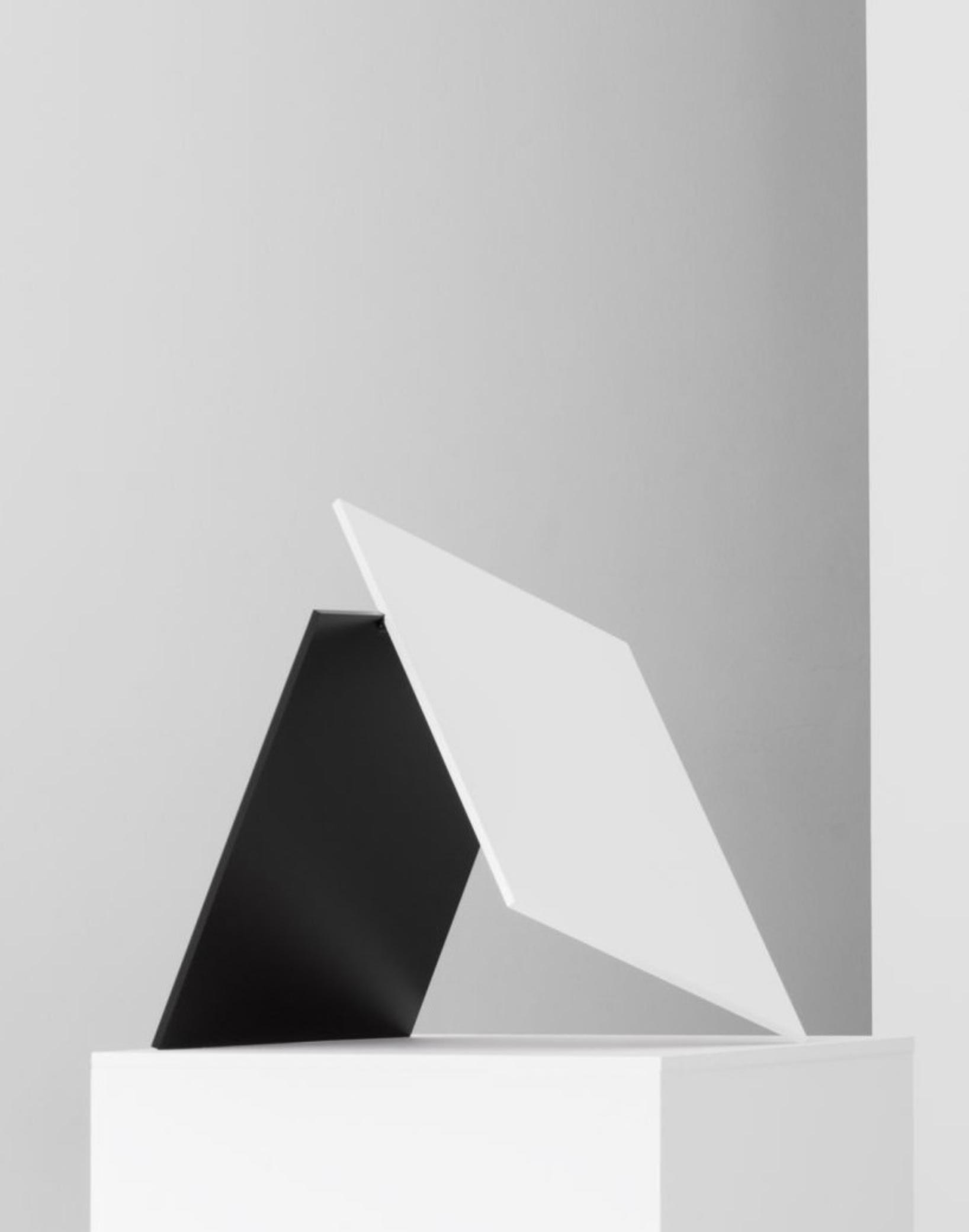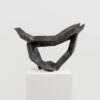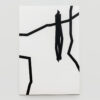Carsten Beck (b. 1986) is a Danish artist who explores architectural structures and forms in his geometric abstract works. Originally working as a graphic designer, illustrator and photographer, Beck began transforming his graphic sketches into oil on canvas and lithography in 2019.
His works are characterized by a symphony of rectangles and triangles that merge in a precisely thought-out harmony. He does not necessarily strive for perfection, but rather for what has been consciously thought through in the construction. His works thus develop a deep impression that goes beyond the visible surface.
The influence of Concrete Art can be seen in Beck’s attention to detail and in the planning and realization of his compositions. The geometric rigor and simplicity of his mostly monochrome works are strongly reminiscent of the aesthetic principles of this art movement. Concrete Art flourished in the middle of the 20th century with artists like Max Bill or Ib Geertsen, but finds a modern reinterpretation in Beck’s artworks.
Beck draws his inspiration from long walks and his special relationship with architecture. The ideas for new works arise while walking, when he discovers new paths, perspectives and perceptions of the world around him. He then captures light, shadows, geometric structures or architectural details with his camera. These photos then serve as the starting point for his paintings, in which he transforms the captured forms and structures into aesthetic compositions.
Carsten Beck’s works embody a timeless aesthetic language – each line becomes part of a conscious artistic dialogue that extends far beyond the visible. His connection to Concrete Art is evident in each of his works and gives them a unique expression. With his modern interpretation, Beck manages to bridge the past and the present, giving this movement new relevance and freshness.
It is difficult to make something simple look interesting. It is that challenge I find so exciting.
Carsten Beck
